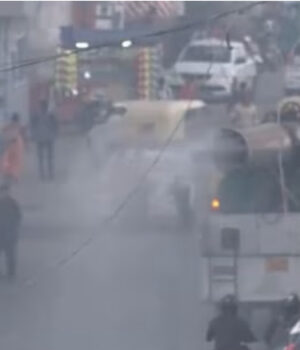The air quality in the capital city of India, Delhi, continued to be a matter of concern on Thursday, with the Air Quality Index (AQI) registering at 256, according to data provided by the System of Air Quality and Weather Forecasting And Research (SAFAR) – India. As per SAFAR’s latest findings, the air quality around Delhi University plunged to a worrisome 316 (categorized as ‘very poor’) during the morning hours, while the IIT area fared slightly better with an AQI of 256.
Delhi, known for its struggle with air pollution, has been grappling with deteriorating air quality, especially during the winter months. The SAFAR report underscores the pressing need for addressing the issue of air pollution in the region, which has serious health implications and impacts the overall quality of life for its residents.
The AQI is a crucial indicator of the air quality in a specific area, offering valuable insights into the concentration of various air pollutants, including particulate matter (PM2.5 and PM10), nitrogen dioxide (NO2), sulfur dioxide (SO2), carbon monoxide (CO), and ozone (O3). An AQI of 256 falls within the ‘poor’ category, indicating that the air quality poses health risks, particularly for those with respiratory issues, children, and the elderly.
The specific data for the areas around Delhi University and IIT highlight disparities in air quality within the city. Delhi University recorded a much higher AQI of 316, signifying a ‘very poor’ air quality rating. This can be attributed to factors such as vehicular emissions, construction activities, and unfavorable weather conditions that trap pollutants close to the ground. On the other hand, the IIT area, with an AQI of 256, still falls under the ‘poor’ category but demonstrates relatively better air quality compared to other parts of the city.
Efforts to combat air pollution in Delhi include measures like implementing odd-even traffic schemes, promoting the use of public transportation, and enforcing stricter industrial regulations. However, the persistence of ‘poor’ and ‘very poor’ air quality ratings underscores the need for more comprehensive and sustained initiatives to tackle this critical issue.
As the city continues to grapple with its air quality concerns, the SAFAR report serves as a stark reminder of the urgent need for a concerted effort to improve the air quality and overall living conditions for the residents of Delhi.










